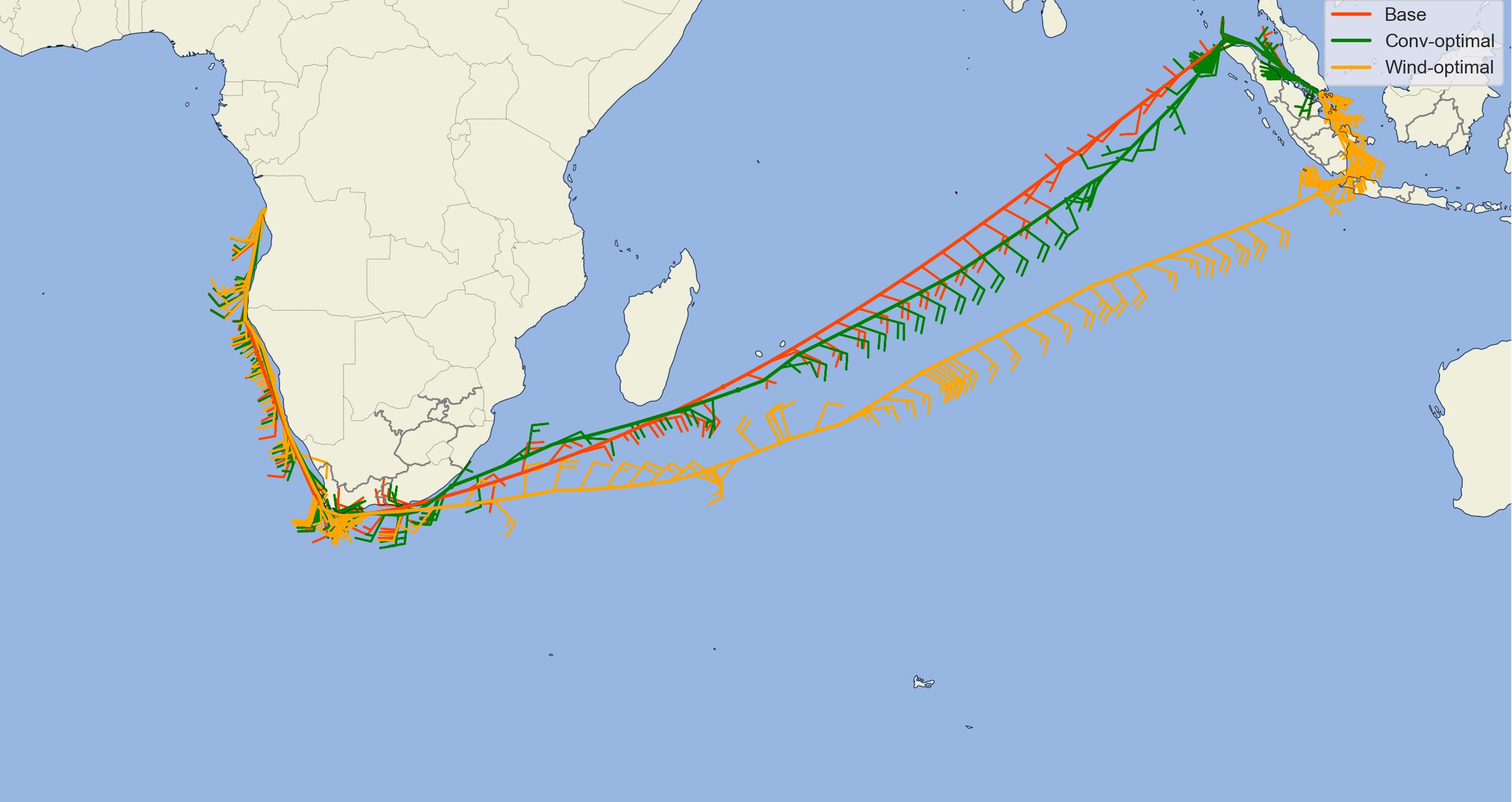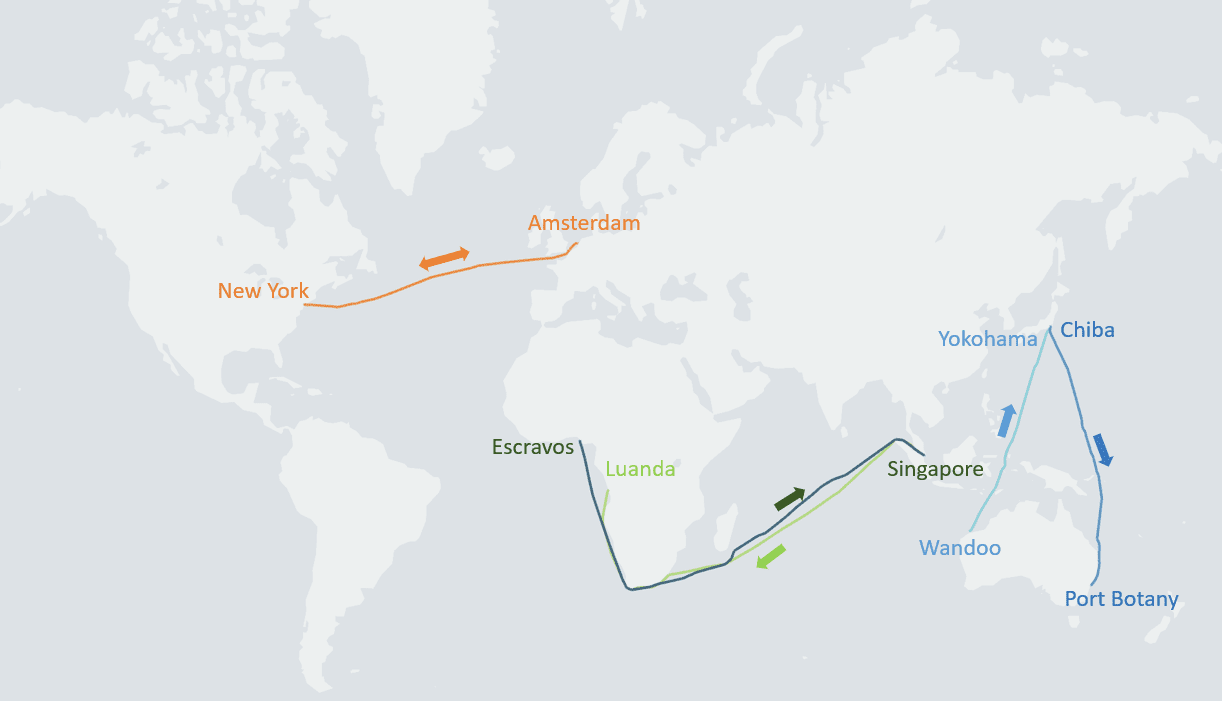July 31, 2023
Taking wind propulsion to the next level with voyage optimization
A joint simulation project between NAPA, Norsepower, and Sumitomo Heavy Industries Marine & Engineering has validated the emissions reduction potential of combining wind propulsion with voyage optimization. The results so far are impressive, confirming that the technologies can deliver up to 28% emissions reductions on average – but we are not stopping there. Phase two of the project will not only enhance performance modeling but also strengthen the role of operational data in the ship design process to build smarter and greener vessels.

Much more than just a buzzword, collaboration can unlock a range of benefits for shipping’s decarbonization journey. With tightening regulations and new solutions entering the market, the industry can work together to navigate change with confidence, gaining the insight and clarity needed to make smarter and more informed commercial, design and operational decisions at every step.
This collaborative spirit is the foundation of our joint study with Norsepower and Sumitomo Heavy Industries Marine & Engineering (SHI-ME). From the outset, our aim was to bring our diverse expertise together to answer a crucial question: what emissions reductions could be achieved by combining wind propulsion and voyage optimization? Now that the first phase of the project has provided valuable answers, in phase two we are turning our attention to an equally important matter: how can we make those results even better in the future?
Phase one: collaborating for greater clarity
Phase one of our joint simulation project, which ran from December 2022 to March 2023, evaluated the fuel saving and emissions reduction potential of combining a Norsepower Rotor SailTM with NAPA Voyage Optimization on a Sumitomo Heavy Industries Marine & Engineering (SHI-ME) tanker.
Using nowcast weather data from 2022 together with specifications provided by Norsepower and SHI-ME, the digital twins developed by NAPA were able to simulate the performance of the tanker in selected sea areas. Looking at results across six routes typically sailed by the vessel, the study found an average CO2 reduction of 19% when using NAPA Voyage Optimization alongside Norsepower Rotor SailsTM, with NAPA Voyage Optimization contributing 10% of these emissions reductions.

The most impressive results were recorded for the Atlantic route between New York and Amsterdam, where the combination of four Norsepower Rotor SailsTM and NAPA’s Voyage Optimization can deliver average emissions reductions of 28%. NAPA Voyage Optimization’s contribution to this was estimated at 12%. For the route between Singapore and Angola, the combination of wind power and weather routing reduced emissions by 17%, with voyage optimization contributing 11%.

For ship owners and operators, this joint study brings much-needed clarity at a critical time, strengthening the business case for investing in wind-assist technology at a time when the industry is under increasing pressure to decarbonize. We already knew that wind propulsion and voyage optimization are essential pillars to start decarbonizing shipping today, and it is perhaps no surprise that wind technology can achieve better results when the ship is routed to make the most of weather conditions. But what the study brings to the conversation is precise, granular data on what the two technologies can achieve together on specific routes. For the industry, this provides critical insight and assurance needed to progress with confidence.
Phase two: strengthening the link between design and operations
Using insights from the simulation, the study is also exploring how to predict vessel performance at the design stage, testing how the ship could handle varying sea and weather conditions. Phase one analysis showed that significant route changes are required to encounter the most favorable wind conditions, and this is where phase two of the project is taking the collaboration further. This second phase, which started in May 2023, is exploring how to enhance the performance of vessels designed with Norsepower Rotor SailsTM even further by developing data for a wider range of vessel responses and weather conditions.
For example, the project will conduct a more advanced analysis of lateral forces and movement of the hull and develop new optimization strategies for improving operational performance. Typically, ships are designed based on “fixed” design conditions, based on calm sea conditions with an added sea margin (the expected average performance loss due to weather). However, wind-assist vessel designs need to be adapted for the stronger wind conditions in which they will be operated. Therefore, the next step will be to incorporate virtual voyage simulations using “dynamic” conditions such as wind, waves and currents to evaluate the vessel’s expected performance in real-life conditions. Moreover, SHI-ME’s ship design process will also include greater consideration of ship stability in heavy weather in addition to the traditional static wave calculations already used for many vessel designs. This will involve developing ways to handle big data sourced from NAPA into the ship design process.
For NAPA, the project will expand our understanding of the design process and increase the sophistication and accuracy of our voyage optimization models. Phase one revealed that weather routing can clearly be a game-changer for wind propulsion, and we see the potential for adding to that value even further when our models are used to inform the ship design process.
Our digital solutions are enabling greater collaboration with stakeholders across the maritime value chain. Phase two will be a further demonstration of that by paving the way for a continual feedback loop between ship operation and ship design. For shipowners, this means more than just greater fuel savings and better ratings under the Carbon Intensity Indicator (CII) regulation. It also means better operational performance going forward for newbuilds and easier compliance with regulations such as the EEDI (Energy Efficiency Design Index). Better performance will also make various incentive schemes available, including port fee concessions, and will bring significant savings when future carbon taxes enter into force.
Using NAPA’s operational voyage simulation technology alongside the technical expertise of Norsepower and SHI-ME, the collaborative study has already brought critical insight and assurance to inform commercial and operational decisions as early as the design stage. We believe the second phase of our project will take decarbonization one significant step further, helping the industry reinvent how we design and operate ships to make the most of existing technologies, in a way that makes sense for their businesses and delivers the change needed for the planet.
This joint study demonstrates how, by joining forces and bringing our diverse expertise together, we can bring positive outcomes for everyone involved, and create added value for the industry as a whole. In this partnership with SHI-ME and Norsepower, we combined our respective experiences in ship design and operations, rotor sail technology, and software and data science. This is just one example of what collaboration can achieve. At NAPA, we are uniquely placed to connect the dots between ship design, safety and operations, while also bringing our IT and data science expertise to the table. By using the full range of its expertise, NAPA is determined to deliver further projects like this in support of sustainable shipping, innovating with partners by connecting people, ideas and technology.